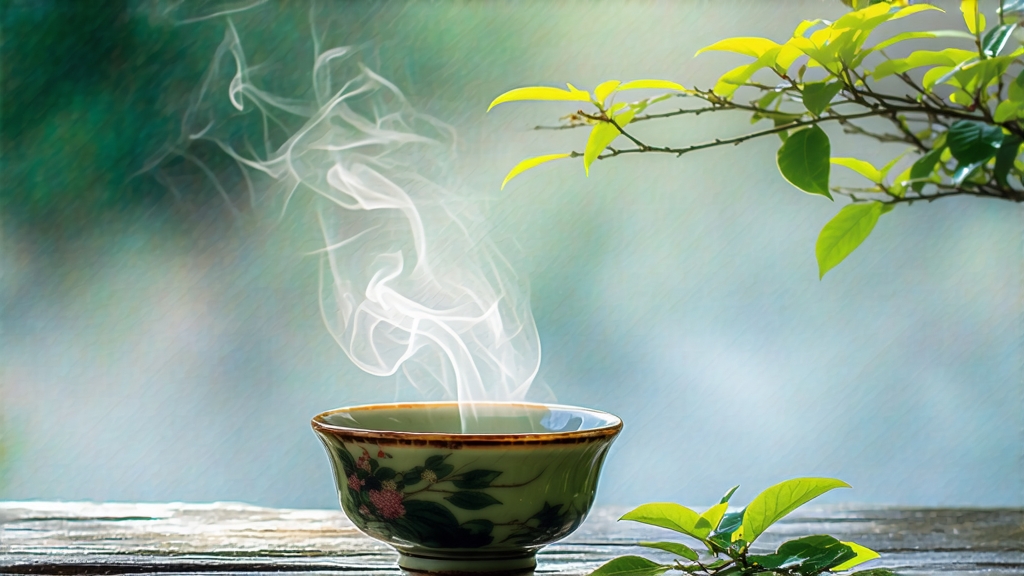
Tucked into the cloud-forests of central Taiwan, Alishan High-Mountain Oolong (阿里山高山乌龙) is the island’s most fragrant ambassador to the world of tea. Born above the clouds at 1 200–1 600 m, this cultivar captures the chill of mist, the sweetness of alpine air, and the patience of generations who learned to coax perfume from leaf. To understand it is to travel from Qing-era frontier trails to twenty-first-century eco-gardens, to witness the moment when science, art and mountain spirit swirl together in a single amber cup.
History: From Imperial Road to Skyline Tea
When the Qing court lifted the maritime ban in 1684, Fujian migrants sailed across the strait with cloth bundles of tea seedlings and stone mills in their hearts. They first planted Wuyi cultivars in the lower hills of northern Taiwan, but it was not until the Japanese colonial period (1895-1945) that systematic varietal selection reached the Alishan range. The Japanese needed high-value exports; the indigenous Tsou people knew every ridge where cedar met camphor. Together they mapped the forest railway that still climbs from Chiayi city to 2 216 m, each switchback exposing cooler, thinner air. After 1949, Kuomintang veterans who had tasted Anxi Tieguanyin swapped cuttings for land grants, grafting the famous cultivar onto local seedling rootstocks. By the 1980s, Taiwanese tea scientists released the modern “qing xin” (heart-of-green) clone, bred for slow growth at altitude. Alishan Oolong as we know it—tight jade pearls that open into three perfect leaves and a dormant bud—was complete.
Terroir: Where Clouds Become Flavor
Alishan is not a single peak but a 20-km spine of ancient sandstone. Daytime temperatures at 1 400 m mimic early spring of the lowlands, yet nightfall can drop to 12 °C. The diurnal swing forces the plant to convert starch into soluble sugars and to double its production of aromatic geraniol and linalool. Meanwhile, 3 000 mm of annual precipitation arrives mostly as fog that blocks direct sunlight, lengthening the photosynthetic cycle and thickening cell walls. The result is a leaf that is physiologically “tender” yet chemically rich, the botanical equivalent of a slow-aged cheese. Farmers often describe the ideal pluck as “three hearts in fog,” meaning the bud and two adjacent leaves are still supple enough to fold without cracking, yet already carrying the waxy cuticle that will hold fragrance through the long oxidation dance.
Cultivars: One Mountain, Many Faces
Although “Alishan Oolong” appears on countless tins, only three genetic lines are recognized by the Chiayi Agricultural Research Station:
- Qing Xin (TTES #12): the classic, lilac-toned, frost-sweet profile.
- Jin Xuan (TTES #12 cross): bred for milk aroma, planted at slightly lower elevation, often blended for body.
- Si Ji Chun (Four-Season Spring): a low-altitude workhorse that some growers coax up-slope for quicker turnover; it gives louder perfume but less endurance across infusions.
Purists insist that true Alishan must be 100 % Qing Xin, hand-plucked between late March and early May, when the mountain’s cherry blossoms begin to fall and the first cicadas start to sing.
Craft: The Rhythm of Sun, Wind and Hand
The making begins at 5 a.m., when dew still weighs down the leaves. Pickers wear LED headlamps and woven bamboo backpacks lined with muslin; every 500 g of finished tea requires 4 kg of fresh leaf, roughly 2 500 plucks. By 9 a.m. the harvest reaches the mountain-top factory, a cedar-clad room whose windows are thrown open to let the cloud stream through.
Withering: Leaves are spread on bamboo trays set at 45° angles so that cool air passes both above and below. No sun-withering here—the high-UV light would scorch the cuticle. Instead, intermittent fans simulate a gentle breeze for 6–8 hours, reducing moisture from 78 % to 68 % and initiating enzymatic hydrolysis of monoterpene glycosides, the precursors to floral aroma.
Shaking: The “green shaking” (浪青) is performed in rotating bamboo drums